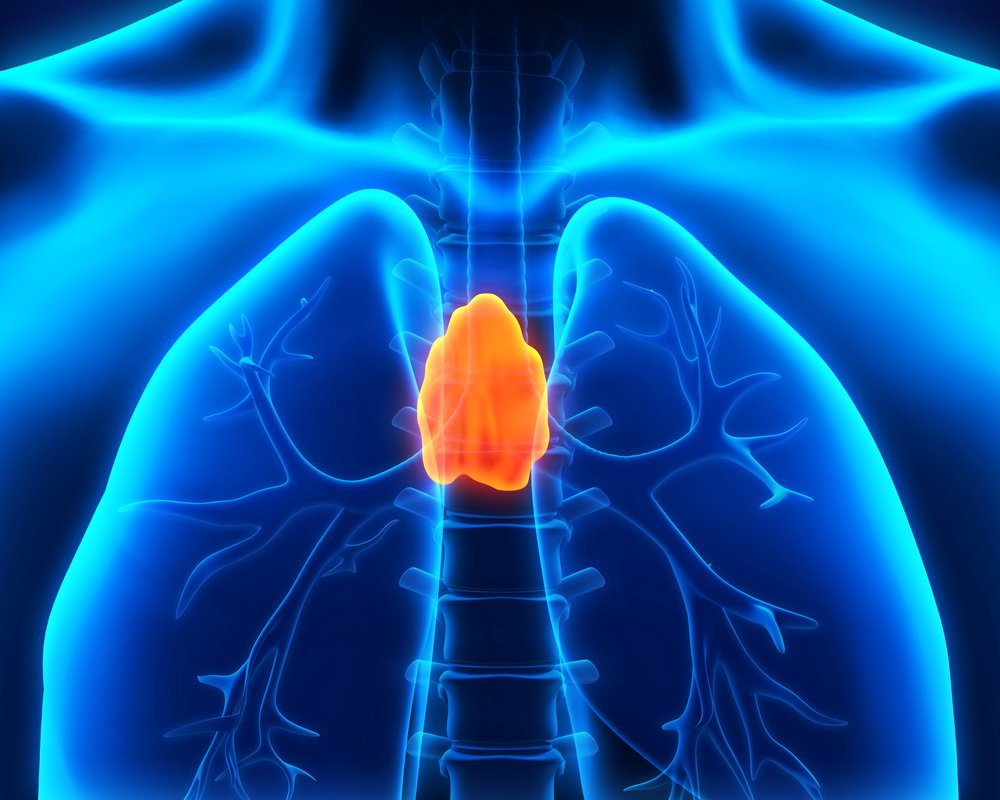Robotic Thymectomy May Decrease Need for Steroid Therapy in Older MG Patients

Robotic surgical removal of the thymus seems to be safe and effective and may reduce or eliminate the need for steroid therapy in myasthenia gravis (MG) patients older than 60 at onset.
The study, “Results of robotic thymectomy performed in myasthenia gravis patients older than 60 years at onset” was published in The Annals of Thoracic Surgery.
The thymus plays an important role in the body’s immune response. It is in this organ that T lymphocytes or T cells, a major type of immune defense cells, mature and are trained to pinpoint foreign and potentially harmful substances.
It is thought that the thymus activates or maintains the production of antibodies that attack the patient’s own acetylcholine receptors in the junction between nerve cells and muscles. Loss of these receptors leads to disease-related damaged nerve-muscle communication.
Research indicates thymectomy (removal of the thymus) may not only help myasthenia gravis patients achieve a higher survival rate with minimal complications and crises, but also improve long-term quality of life.
Thymectomy is currently recommended as a treatment for patients with a combination of generalized myasthenia gravis and antibodies against acetylcholine receptor. Surgical approaches range from invasive open-chest thymectomy to minimally invasive, video-assisted thoracoscopic thymus removal and robotic thymectomy.
Nonetheless, there’s still not enough evidence on the safety and efficacy of robotic surgical removal of the thymus in MG patients older than 60 at onset.
Using the Myasthenia Gravis Foundation of America Post-Intervention Status (MGFA-PIS) classification system, investigators from the Charité University Hospital Berlin analyzed the perioperative (the period of time from when the patient is admitted to the hospital until discharge) complications and clinical outcome of 68 MG patients (43 men and 25 women) who had undergone robotic thymectomy.
Patients’ age at onset ranged from 61 to 85 (median 67 years).
Around 13.2 percent of the study sample had perioperative complications; the only surgery-related mortality was because of bleeding from a tear in the inner layer of the aorta (aortic dissection), the large blood vessel branching off the heart.
Of the initial 68 patients, 51 were followed for a median of 60 months. Further assessment revealed that 7.8% achieved complete stable remission and 68.6% had improved (experienced a substantial decrease in pre-treatment clinical manifestations or a sustained substantial reduction in MG medication) by the end of follow-up. Overall mortality rate was 11.8%.
Patients had their average daily dose of corticosteroid therapy significantly reduced at their last follow-up visit, in comparison to their medication dosage before surgery. The reduction was achieved without increased use of azathioprine, an immunosuppressive medicine.
Sometimes immunosuppressive medications are given in addition to or instead of steroid therapy to lower the dose of steroids needed and thus spare some of the side effects of steroid therapy.
Forty-nine patients tested positive for the acetylcholine receptor antibody. Of these, four achieved complete stable remission (no signs or symptoms of the disease and no MG therapy for at least one year), three achieved pharmacologic remission and three had a minimal-manifestations score of zero (some muscle weakness but no MG treatment for at least a year).
In general, these 10 patients reached what the scientists called a “good outcome,” meaning they were free of accompanying disease and had a substantial decrease in pre-thymectomy clinical manifestations or a sustained significant reduction in MG pharmacological therapy.
“Robotic thymectomy seems to be safe and effective in MG patients older than 60 years at onset with a significant steroid-sparing effect,” researchers concluded.






